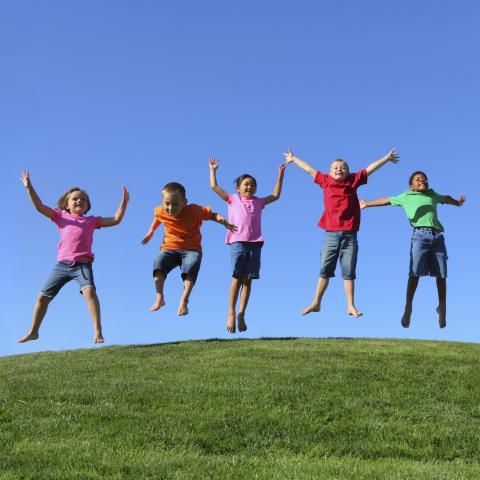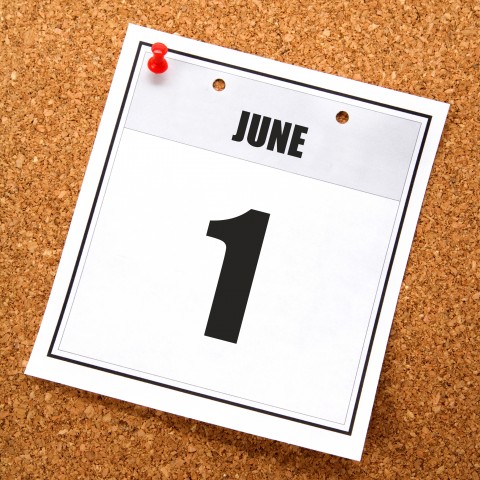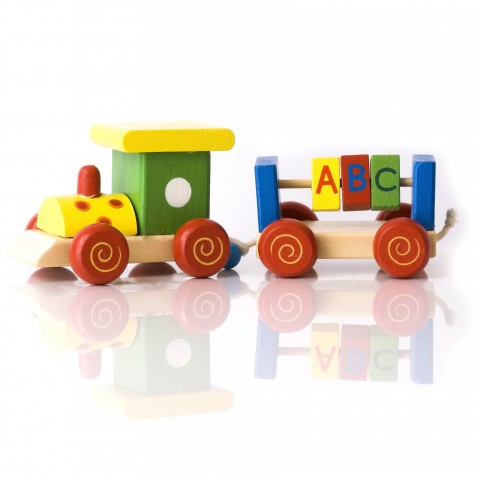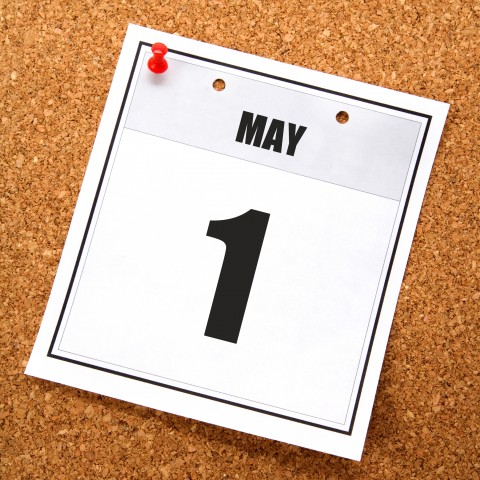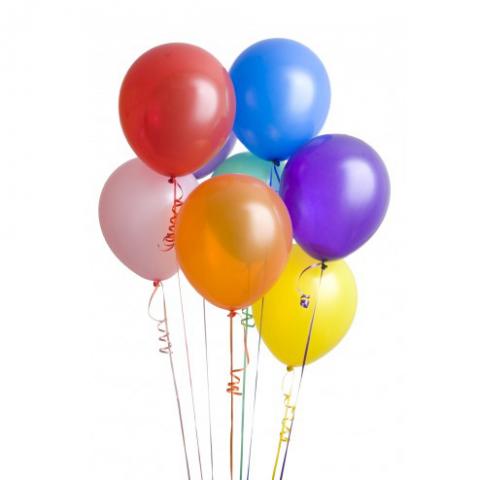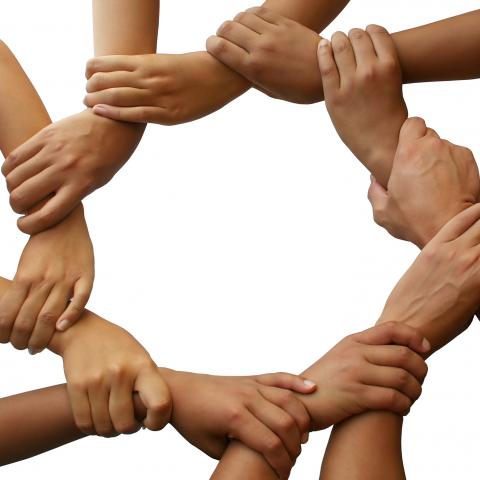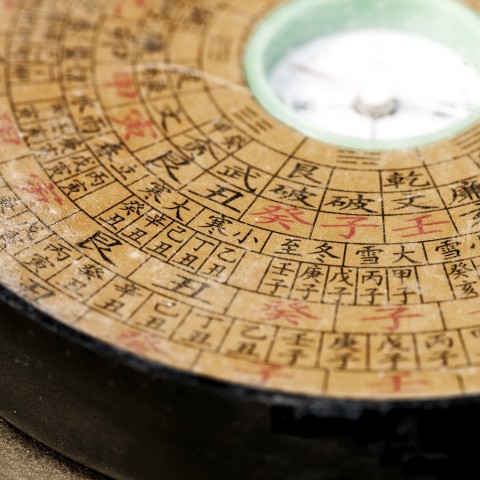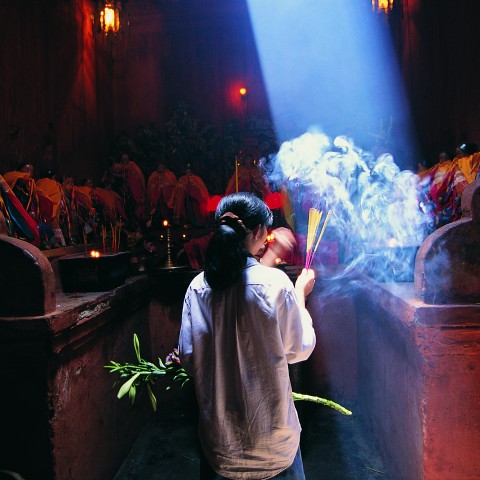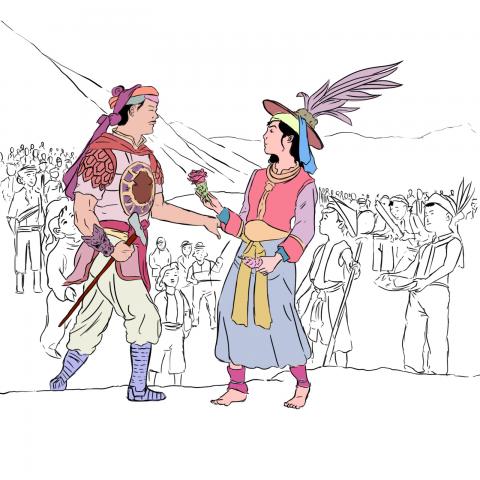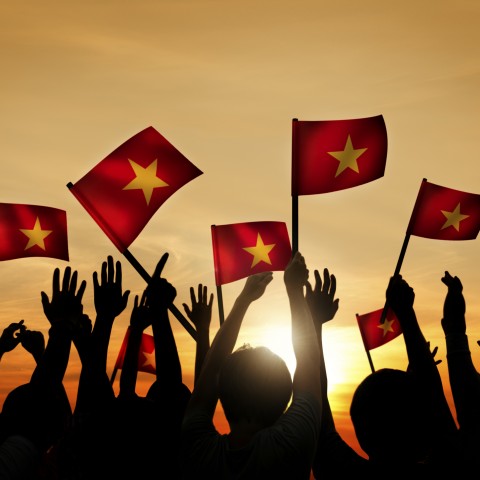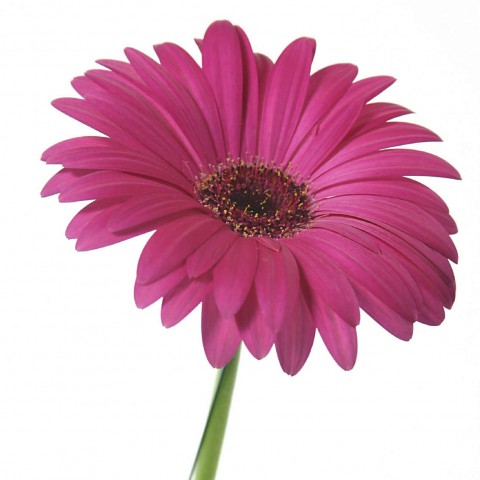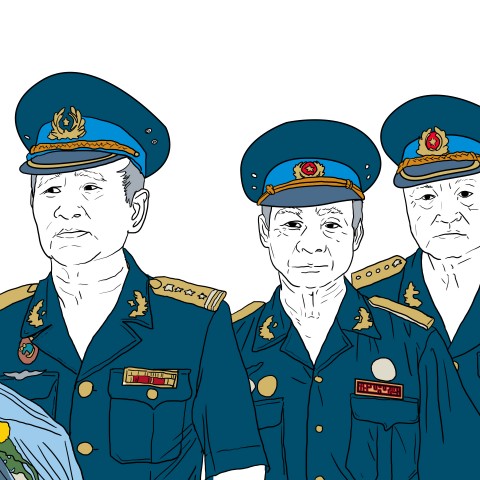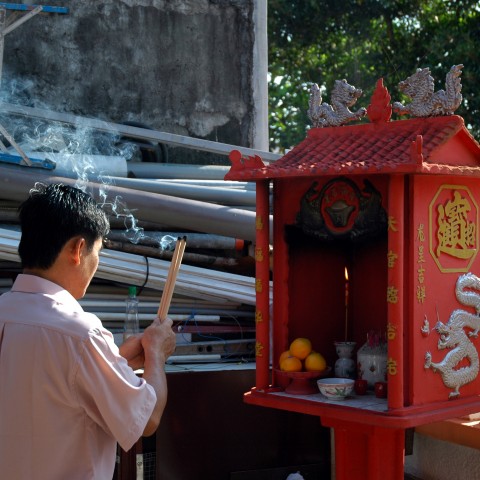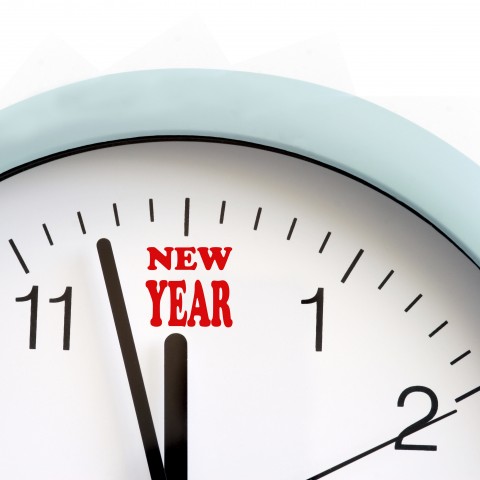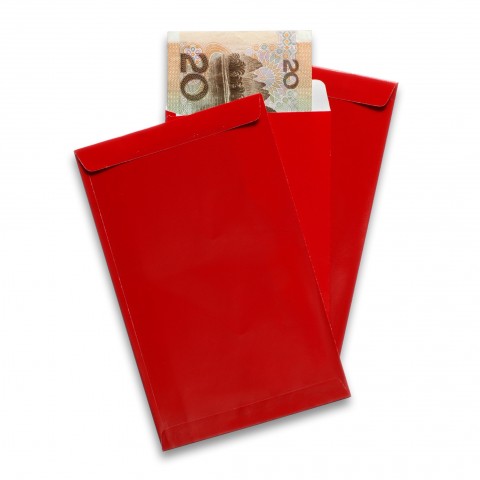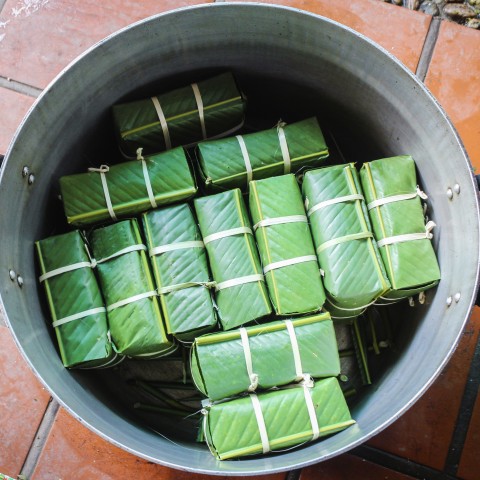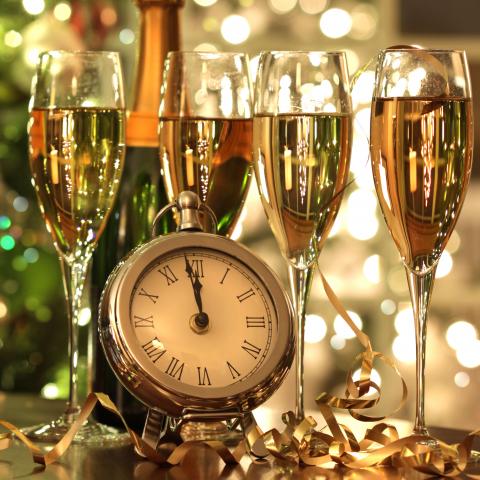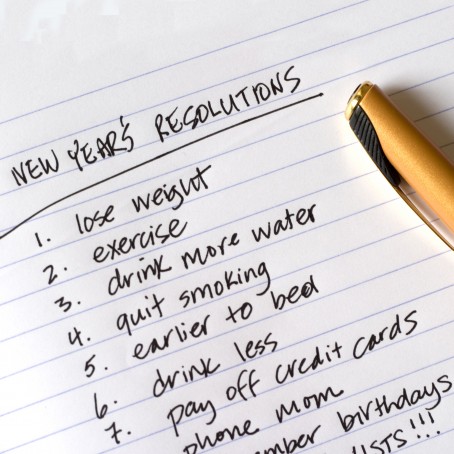
Most countries have a national anthem with which to express the pride of their country, to convey in it the cultural and historical stories of a nation, to be played on sacred or official occasions, and to represent the noble ideals that all people in the same country aspire to. Most national anthems of countries are public property according to the law. For example, when the American national anthem is performed or recorded during a broadcast of the National Football League (NFL), the NFL will own the reproduction, publishing, and performance rights to this particular show.
Meanwhile, Singapore law stipulates that the national anthem can only be sung or performed on appropriate occasions. Individuals performing or singing the national anthem must perform or sing in accordance with the original or remix that meets strict melody and lyrics requirements.
So, what is a national anthem song?
A national anthem is a song that expresses patriotism, evokes, and celebrates the history, traditions, and struggles of the people of that country, recognized by the government of a country as the official national anthem or widely used by people as a custom.
Whenever there is a flag-raising ceremony at a conference or a sports match between Vietnam and another country, I find that not many national anthems have the same heroic and tragic melody as the Vietnam national anthem, which explains why some consider Vietnam’s national anthem – Tien Quan Ca, by musician Van Cao – one of the most heroic national anthems in the world.
 Table of Contents
Table of Contents
- The first Vietnamese anthem
- Tiến quân ca (The Marching Song Lyric)
- Hoàn cảnh sáng tác Tiến quân ca (the Circumstances of Composing Tien Quan Ca)
- Những dịp hát quốc ca Việt Nam (Singing Occasions for the Vietnamese Anthem)
- Conclusion
1. The first Vietnamese anthem
What is the national anthem of Vietnam?
According to Nguyen Ngoc Huy – a politician of the Republic of Vietnam and a Vietnamese poet and writer – Emperor Bao Dai came down to the stage to select a national flag and anthem during the Second World War. The Vietnamese flag was the Cờ long tinh and the national Vietnamese anthem was the song Đăng đàn cung ( [melody] on the ascent to the esplanade).

Đăng đàn cung is an ancient Vietnamese song and is still used in most of the textbooks teaching classical music and traditional instruments. This is a song from the ritual of Nam Giao sacrifice, used when the king comes to the altar to sacrifice animals and valuable sundries. The Nam Giao sacrifice ceremony, performed every 3 years on the winter solstice, was the most important ceremony in the court’s rites, where the king would make sacrifices on behalf of the nation.
In 1942 in Hanoi, musician Le Huu Muc recorded music and put other lyrics to Đăng đàn cung and called it Vietnam’s national anthem, naming it Tiếng gọi non sông (The Call of the River), also known as Hồn Việt Nam (Vietnamese soul). It was considered by some to be the national anthem, but little was known in the Central region.
| Lời bài hát : Tiếng gọi non sông | The Call of the River Lyric |
| Bên núi sông hùng vĩ trời Nam Đã bao đời vết anh hùng chưa hề tan Vì đâu máu ai ghi ngàn thu? Còn tỏ tường bên núi sông Xác thân tan tành Vì nước quên mình | The majestic mountains and rivers in the South sky For many generations, the traces of heroes have not disappeared Why does people’s blood write for thousands of years? And clearly on the side of the mountain and river Broken body Forgets ourselves for the country |
2. Tiến quân ca (The Marching Song Lyric)
“Tiến quân ca” is a song composed by musician Van Cao in 1944 and has been used as the national anthem of the Socialist Republic of Vietnam since 1976. Before that, “Tiến quân ca” was the national anthem song of the Democratic Republic of Vietnam from 1945 to 1976. Since its birth, the song has been considered the official song of the Viet Minh Front. During the August Revolution of 1945, instead of “Vietnamese troops go,” Viet Minh participants often sang “Viet Minh troops go.” When officially chosen as the Vietnamese national anthem, the lyrics of the national anthem of Vietnam were modified in some ways compared to the original “Tiến quân ca” by Van Cao.
| Vietnam national anthem lyrics in Vietnamese | Vietnam national anthem in English |
| Đoàn quân Việt Nam đi Chung lòng cứu quốc Bước chân dồn vang trên đường gập ghềnh xa Cờ in máu chiến thắng mang hồn nước Súng ngoài xa chen khúc quân hành ca Đường vinh quang xây xác quân thù Thắng gian lao cùng nhau lập chiến khu Vì nhân dân chiến đấu không ngừng Tiến mau ra sa trường Tiến lên, cùng tiến lên Nước non Việt Nam ta vững bền | Soldiers of Vietnam marching onward United in determination to save the nation Our steps resound on the long and arduous road Our flag, red with the blood of victory, bears the spirit of the country The distant rumbling of guns mingles with our marching song The path to glory is built by the bodies of our foes Overcoming all hardships, together we build our resistance bases Let us swear to fight relentlessly for the people’s cause. Let us run to the battlefield! Forward! All together, let’s go forward! The Vietnamese homeland is strong and durable |
| Đoàn quân Việt Nam đi Sao vàng phấp phớiDắt giống nòi quê hương qua nơi lầm than Cùng chung sức phấn đấu xây đời mới Đứng đều lên gông xích ta đập tan Từ bao lâu ta nuốt căm hờn Quyết hy sinh đời ta tươi thắm hơn Vì nhân dân chiến đấu không ngừng Tiến mau ra sa trường Tiến lên! Cùng tiến lên! Nước non Việt Nam ta vững bền | Soldiers of Vietnam marching onward The gold star in the wind Leading our people and our homeland out of misery and suffering Let us unite our efforts in the struggle for building a new life Stand up! With the same impetus, let’s break our irons! For so long we have contained our hatred! Let us be ready to make every sacrifice so that our life may be radiant Let us swear to fight relentlessly for the people’s cause. Let us run to the battlefield! Forward! All together, let’s go forward! The Vietnamese homeland is strong and durable |
3. Hoàn cảnh sáng tác Tiến quân ca (the Circumstances of Composing Tien Quan Ca)
In the 21-year-old Van Cao’s memoirs “Why I wrote Tiến quân ca,” he confided: “The song was made in an unknown number of days in the narrow attic number 45 Nguyen Thuong Hien Street, next to a window overlooking a 2-story house, rows of trees and a gray sky. It often echoes bullock carts carrying bodies of starving people towards Kham Thien Street here. Also, I was sleepless because of the monsoon entering each door, because of the sound of fighting and swearing at each other from a family of poor, undernourished civil servants, echoing through the gaps in the open attic. I understand more life stories here. There are knocks on the door, night calls are unanswered at night.”
After the song was written, Van Cao met and sang it to Mr. Vu Quy, a friend and member of the Viet Minh. Mr. Quy was very pleased. He assigned Van Cao to write the song himself on the printed stone. Because the scribe couldn’t write musical notes, Van Cao had to go directly to a secret printing facility in Bat Trang village to write and print the song “Tiến quân ca” by hand. For the first time, “Tiến quân ca” was printed on the Art page of Doc Lap newspaper in November 1944 with a stone print written by Van Cao himself. Writer Nguyen Dinh Thi, when listening to Van Cao singing this song, was touched and proposed that each of them write another song about the Viet Minh Front. After that, writer Nguyen Dinh Thi wrote the song Diệt phát xít (Destroying the fascists) and Van Cao added the song Chiến sĩ Việt Nam (Vietnamese soldiers), both of which were widely popularized by the public.
- On August 13, 1945, President Ho Chi Minh officially approved “Tiến quân ca” as the national anthem of the Democratic Republic of Vietnam.
- On August 17, 1945, during a meeting of the people of Hanoi in front of the Opera House, the song “Tiến quân ca” was played.
- Also at the Opera House Square, on August 19, 1945, there was the choir of the Young Pioneers singing the song “Tiến quân ca” to salute the national flag during a large meeting.
- On September 2, 1945, “Tiến quân ca” was officially performed on the day of the Declaration of Independence at Ba Dinh Square by the Liberation Army Band led by Dinh Ngoc Lien.
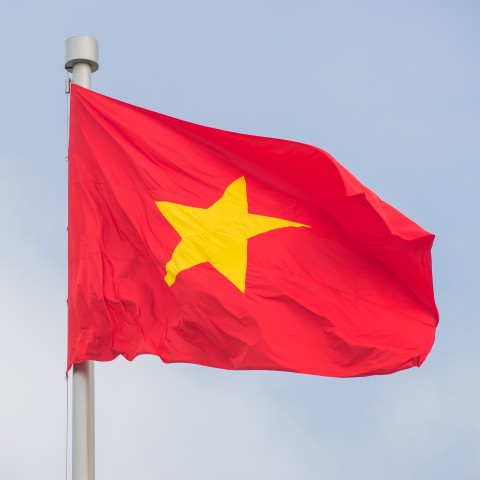
4. Những dịp hát quốc ca Việt Nam (Singing Occasions for the Vietnamese Anthem)
The Vietnamese national anthem, produced by Minh Quan
The national anthem of the Socialist Republic of Vietnam includes the music and lyrics of the song “Tiến quân ca” is often used in flag-raising ceremonies at state offices, schools, political ceremonies of the country, mass organizations, national festivals, or state and national sports events. Quốc thiều is the music of the song “Tiến quân ca/Quốc ca” (Vietnamese anthem song), and is used in flag raising ceremonies, welcome ceremonies for heads of state, state-level ceremonies, and more.
5. Conclusion
No matter what version, Tiến quân ca as the Vietnam national anthem still has a heroic and tragic melody that no one can deny. Learning Vietnamese through songs and movies will not only give you a chance to learn the language but also about our country with a rich history.
If you want to try other Vietnamese cultural lessons, visit VietnamesePod101 for more audio files, flashcards, free lessons, and vocabulary lists to master your Vietnamese today. To improve pronunciation, go to our VietnamesePod101 Youtube Channel for video lessons and free gifts every week.
Want to tell us about your national anthem? Leave a comment below.
Bai!

How to Celebrate International Children’s Day in Vietnam
Do you remember being a kid? The world was bigger, and our imaginations seemed to cover more ground. Weekends, summer vacation, and holidays were the best thing ever!
In Vietnam, International Children’s Day is one of those days that children look forward to all year long. In this article, you’ll learn all about this holiday and how the Vietnamese celebrate it each year; you’ll also pick up some handy vocab!
Let’s get started.

1. What is International Children’s Day?
Children’s Day, as we know it today, got its start in 1857 when a pastor from the U.S. state of Massachusetts gave a sermon for and about children. Many years later, in 1920, Turkey made Children’s Day a national holiday; the idea soon spread to many other countries. By 1950, most countries had their own International Children’s Day celebration.
It was in 1950 that Vietnam held its first Children’s Day. At the time, Vietnam was under threat of enemy bombing, so they held the festivities in secret. They chose to celebrate in a forest of Thai Nguyen Province, a location that offered them greater maneuverability in case of an emergency. Despite the heavy shadows surrounding this first Children’s Day, Vietnamese trẻ con (“children”) greatly enjoyed themselves with games, songs, and group activities.
Like in other countries, Children’s Day in Vietnam is a special time for honoring children, emphasizing the importance of keeping them healthy and safe, and promoting children’s rights. Children are the future, so it’s vital that parents and other adults prepare them for the road ahead—and allow them to enjoy their childhood along the way.
-
→ See our vocabulary lists on the Must-Know Terms for Family Members and Common Vietnamese Phrases to Know About Having a Baby for some relevant words and phrases.
2. When is Children’s Day?
Each year, Vietnam celebrates International Children’s Day on Ngày mùng một tháng sáu (“June 1”). This is when the majority of countries observe the holiday, though the United Nations celebrates on November 20, and some other countries have separate dates as well.
3. Popular Children’s Day Traditions & Activities
In Vietnam, Children’s Day is largely a time for children to have fun and relax! Today, while life is more peaceful and the country is more prosperous, there are so many more opportunities for kids to be themselves and explore the world on this day.
Activities for International Children’s Day can vary from family to family. Some families may opt to đi ăn ở ngoài (“eat out”) at their child’s favorite restaurant, đi thăm vườn bách thú (“go to a zoo”), or just chơi trò chơi (“play games”) at home.
In schools, it’s not uncommon for there to be a special buổi biểu diễn (“performance”) of children singing and dancing. If a child has been good all throughout the school year, that child’s teacher may give them a quà tặng (“present”)!
Oftentimes, couples participate in Children’s Day activities with their families so they can go on a date in the company of others. This allows the couple to spend time together and avoid any awkwardness or shyness during their “date.”
-
→ What are your favorite Weekend Activities? Let us know in the comments!
4. Another Vietnamese Children’s Day?
There’s another holiday for children during the year: The Mid-Autumn Festival! You may be familiar with this holiday already, but did you know that it’s like a second Children’s Day for the little ones?
Children often receive lots of gifts from parents and other family members, and it’s the perfect occasion to play traditional games and have fun!
-
→ See our vocabulary list for the Mid-Autumn Festival to prepare for our upcoming article. 😉
5. Must-Know Children’s Day Vocabulary
Let’s review some of the vocabulary words from this article!
- Nhảy — “Dance” [v.]
- Trẻ con — “Children” [n.]
- Buổi biểu diễn — “Performance” [n.]
- Đi ăn ở ngoài — “Eat out”
- Quà tặng — “Present” [n.]
- Công viên — “Park” [n.]
- Hát — “Sing” [v.]
- Ngày quốc tế thiếu nhi — “International Children’s Day” [n.]
- Đồ chơi — “Toy” [n.]
- Chơi trò chơi — “Play games”
- Lòng yêu trẻ — “Love for children” [n.]
- Ngày mùng một tháng sáu — “June 1”
- Đi thăm vườn bách thú — “Go to a zoo”
- Búp bê — “Doll” [n.]
If you want to hear the pronunciation of each word and phrase listed above, be sure to visit our Vietnamese International Children’s Day vocabulary list!
Final Thoughts
We hope you enjoyed learning about International Children’s Day in Vietnam with us, and that you took away some valuable cultural information.
Do you celebrate International Children’s Day in your country? If so, are celebrations similar to or quite different from those in Vietnam? We look forward to hearing from you in the comments!
To continue learning about Vietnamese culture and the language, VietnamesePod101.com has several free resources for you, straight from our blog:
- Vietnamese New Year: How to Celebrate Tet Holiday in Vietnam
- How to Celebrate President Ho Chi Minh’s Birthday
- The Vietnam National Day: Vietnamese Independence Day
- Celebrating National Teacher’s Day in Vietnam
- Learn How to Talk About Your Family in Vietnamese
This only scratches the surface of everything VietnamesePod101.com can offer the aspiring Vietnamese-learner. To make the most of your study time, create your free lifetime account today; for access to exclusive content and lessons, upgrade to our Premium or Premium PLUS plans.
Happy International Children’s Day from the VietnamesePod101 family! 😀

Ngày Quốc tế Lao động: International Workers’ Day in Vietnam
International Workers’ Day is an important holiday in Vietnam, where workers can both have the day off of work and request better working conditions. In this article, you’ll learn about the history of Labor Day in Vietnam, how people take advantage of their day off, and some useful vocabulary.
Let’s get started.

1. What is Labor Day?
Labor Day originated in the United States in 1886 when workers demonstrated for better working conditions, more specifically, an eight-hour workday. In addition to the Haymarket Affair, this helped American workers eventually attain more rights and a better work environment.
International Labor Day in Vietnam began in 1930. Led by the Communist Party of Vietnam, Vietnamese workers took to the streets with demonstrations for the first time since Indochina’s labor movement started. During this first International Labor Day, Vietnam asked the French Empire for better working conditions, higher wages, and implementation of the eight-hour workday.
After the 1945 August Revolution, Ho Chi Minh designated International Workers’ Day as an official public holiday in Vietnam, giving workers the day off each year.
Today, this holiday is a time to honor every công nhân (“worker” ), demonstrate for more rights, and of course, to relax and take it easy.
-
→ Check out our vocabulary list on Jobs / Work to pick up some useful vocabulary!
2. When is Labor Day in Vietnam?
Each year, Vietnam celebrates Labor Day on May 1 with the rest of the world (except for the United States, which celebrates on the first Monday of September).
-
→ Learn the Top 5 Important Dates During the Vietnamese Calendar Year with VietnamesePod101.com!
3. Celebrating Labor Day in Vietnamese Culture
If you happen to be in Vietnam during Labor Day, you’ll likely see a cuộc diễu hành (“parade” ) in the streets, hear a diễn văn (“speech” ), and find plenty of great trò giải trí (“entertainment” ) everywhere you go. On Labor Day, Vietnam is filled with banners, flags, and maybe even bóng bay (“balloon” ) and hoa (“flower” ) decorations.
All workers are allowed to take paid leave during this holiday, and because Labor Day directly follows another public holiday (Liberation Day on April 30), this is often a full Labor Day weekend for workers. Even better is when these two holidays fall on a Thursday and Friday, because this gives workers four days off from work. Many people use this very long holiday season to đi du lịch (“travel” ), especially to their hometowns to spend time with family or old friends.
Because so many people are away traveling, the streets in certain areas may be pretty empty.
-
→ Here are the Top 30 Travel Phrases You Should Know!
4. Communist Party of Vietnam
The Communist Party of Vietnam is the only ruling body in the country, and it implements ideals from Marxism-Leninism and Ho Chi Minh himself into its governance. This party has split into different factions a few times since its start, and today, Vietnam is in the process of shifting to a more socialist market and government system.
-
→ You can read about the Communist Party of Vietnam Foundation Anniversary on VietnamesePod101.com!
5. Must-Know Vocabulary for International Workers’ Day
Ready to review some of the vocabulary words from this article? Here’s a list of the most important words and phrases for Labor Day in Vietnam!
- Công nhân — “Worker” [n.]
- Hoa — “Flower” [n.]
- Đi du lịch — “Travel”
- Ngày Quốc tế Lao động — “International Workers’ Day” [n.]
- Diễn văn — “Speech” [n.]
- Cuộc diễu hành — “Parade” [n.]
- Đảng Cộng sản — “Communist Party” [n.]
- Trò giải trí — “Entertainment” [n.]
- Biểu ngữ — “Banner” [n.]
- Bóng bay — “Balloon” [n.]
- Công đoàn — “Trade union” [n.]
- Tình đoàn kết — “Solidarity” [n.]
- Ngày mùng 1 tháng 5 — “May 1”
- Bóc lột — “Exploit” [v.]
- Quyền lao động — “Labor right”
- Cuộc biểu tình — “Demonstration” [n.]
- Phong trào — “Movement” [n.]
To hear the pronunciation of each word and phrase, and to read them alongside relevant images, be sure to check out our Vietnamese International Workers’ Day vocabulary list!
Final Thoughts
We hope you enjoyed learning about the Vietnam Labor Day holiday with us, and that you were able to take away some valuable information.
Do you celebrate Labor Day in your country? If so, how do celebrations differ from those in Vietnam? We look forward to hearing from you in the comments!
If you want to learn even more about Vietnamese culture and the language, you may be interested in reading the following pages:
- How to Celebrate President Ho Chi Minh’s Birthday
- The Vietnam National Day: Vietnamese Independence Day
- Celebrating National Teachers’ Day in Vietnam
- VietnamesePod101’s Essential Vietnamese Travel Phrase Guide
- The Vietnamese Calendar: Talking About Dates in Vietnamese
This is just the tip of the iceberg. For more fantastic Vietnamese-learning content, create your free lifetime account with us today. You can also upgrade to our Premium or Premium PLUS plans to gain access to exclusive lessons to help you learn Vietnamese faster.
Happy International Workers’ Day! 🙂

Celebrating the Hung Kings’ Temple Festival in Vietnam
In Vietnam, Hung Kings’ Temple Festival is a major national holiday. It commemorates the story of Vietnamese origins, celebrates the Hung Kings who helped make Vietnam what it is today, and is a strong reflection of Vietnamese culture.
In this article, you’ll learn all about the Vietnamese Hung King Temple Festival, from its background to modern-day traditions.
Let’s get started!

1. What is the Hung King’s Temple Festival?
This day demonstrates the moral “when drinking water, remember its source.” According to legend, Lac Long Quan and Au Co, who are the parents of the Hung Kings, are the ancestors of the Vietnamese people. The Hung Vuong period was a crucial stage in the nation’s history, building the cultural foundation and patriotic traditions of Vietnam.
The Hung Kings’ Temple is actually in Phu Tho Province on Nghia Linh Mountain. The legend of where the temple was built can be traced back to the First King Hung, who visited 99 different locations before moving to Nghia Linh Mountain. When he arrived here, his horse whinnied and he decided that this was an ideal place to build the capital of Vietnam.
2. When is Hung King’s Temple Festival?
Each year, the Vietnamese people celebrate the Hung Kings’ Temple Festival holiday on the tenth day of the third lunar month. However, the entire festival is from the eighth to the eleventh day of this month.
For your convenience, here’s a list of this holiday’s date on the Gregorian calendar for the next ten years:
| Start Date | End Date | |
|---|---|---|
| 2020 | March 31 | April 2 |
| 2021 | April 19 | April 22 |
| 2022 | April 8 | April 11 |
| 2023 | March 29 | April 1 |
| 2024 | April 16 | April 19 |
| 2025 | April 5 | April 8 |
| 2026 | April 24 | April 27 |
| 2027 | April 14 | April 17 |
| 2028 | April 2 | April 5 |
| 2029 | April 21 | April 24 |
3. Hung Kings’ Commemoration Activities and Traditions
Most celebrations and traditions for this holiday take place at the Hung King Temple (Đền Hùng) in Phú Thọ province (Phú Thọ). The festival includes a lot of rich cultural activities of Vietnam, such as carrying incense, flower processions, elephant parades, unicorn dances, and more.
On the Hung King Temple Festival, Vietnamese people travel by the thousands to the Hung Kings’ Temple as a pilgrimage, or cuộc hành hương, to their place of origin. The Hung King Temple is an important architectural icon in Vietnam, and the Vietnamese people consider it sacred ground.
Vietnamese people also like to celebrate the holiday with a lavish feast. Hung Kings’ Temple Festival foods include rice cakes and five fruits. This is because, according to legend, King Lang Lieu created bánh chưng bánh dày (“rice cakes” ) and the Hung Kings taught Vietnamese people how to grow rice plants.
If you happen to be in Vietnam during Hung Kings’ Commemoration Day, you’ll also have the privilege of seeing both modern and ancient flags being flown throughout the country.
-
→ Do you want to visit Vietnam soon? Check out our list of the top Tourist Attractions in Vietnam!
→ To learn more about popular Vietnamese foods, visit our vocabulary list titled What’s Your Favorite Vietnamese Food?
4. The Dragon and Fairy
The legend of the Hung Kings can be traced to Lac Long Quan, whose name translates to King Dragon from Lac.
According to the Dragon and Fairy legend (Truyền thuyết Con Rồng Cháu Tiên), he had superhuman strength. A nearby king decided to marry his daughter to Lac Long Quan. She became pregnant, but she ended up giving birth to a huge sac with more than a hundred eggs inside of it, all of which hatched into babies. All of those babies are believed to be the ancestors of the Vietnamese.
The oldest son of those babies ended up being King Hung I, the first of eighteen kings in the Hung Dynasty.
5. Essential Vocabulary for Hung King’s Festival
Ready to review some of the vocabulary words from this article? Here’s a list of the most important words and phrases for the Hung Kings’ Festival!
- Phú Thọ — “Phú Thọ province”
- Bánh chưng — “Chung cake”
- Ngày Giỗ tổ Hùng Vương — “Hung Kings’ Temple Festival”
- Văn Lang — “Van Lang”
- Dâng hương — “Thurify”
- Ngày mùng mười tháng ba âm lịch — “The tenth day of the third lunar month”
- Cuộc hành hương — “Pilgrimage”
- Đền Hùng — “Hùng Temple”
- Vua Hùng — “Hùng kings”
- Truyền thuyết Con Rồng Cháu Tiên — “Dragon and Fairy legend”
- Bánh dày — “Day cake”
- Đám rước kiệu — “Procession”
To hear the pronunciation of each word and phrase, and to read them alongside relevant images, be sure to check out our Vietnamese Hung Kings’ Temple Festival vocabulary list!
Final Thoughts
We hope you enjoyed learning about the Hung Kings’ Temple Festival with us, and that you took away some valuable cultural information.
What are your thoughts on this Vietnamese holiday? Is there a similar holiday in your country? Let us know in the comments!
If you’re fascinated with Vietnamese culture and can’t get enough, we recommend that you check out the following pages on VietnamesePod101.com:
- Top 5 Things You Need to Know About Vietnamese Pop Culture
- Top 5 Things You Need to Know About Vietnamese Society
- Communist Party of Vietnam Foundation Anniversary
- Celebrating National Teacher’s Day in Vietnam
- How to Celebrate President Ho Chi Minh’s Birthday
That should be enough to quench your thirst for cultural knowledge for a little while, but for the full experience and more great learning resources, create your free lifetime account today. VietnamesePod101.com has tons of fun lessons for learners at every level, so there’s something for everyone.
We look forward to having you! 🙂

Communist Party of Vietnam Foundation Anniversary
The Vietnamese Communist Party is at the root of the country’s growth and future goals, and is the single ruling body of Vietnam. In this article, you’ll learn about how the Communist Party of Vietnam has shaped Vietnam as a dân tộc, or “nation,” and gain more information about the Party’s leadership.
Are you ready to delve into one of the core aspects of Vietnamese culture and society? At VietnamesePod101.com, we make learning simple and relevant. Let’s get started!

1. What is Communist Party of Vietnam Founding Anniversary?
On the Communist Party of Vietnam Founding Anniversary, the Vietnamese people commemorate the creation and implementation of the Đảng Cộng sản, or “Communist Party,” of Vietnam. This Communist Party is the only ruling party, led by a General Secretary. Guided by chủ nghĩa Mác – Lê nin, or “Marxism-Leninism,” and Ho Chi Minh’s ideologies, the party is the leading body of the Vietnamese state and society.
The Communist Party of Vietnam has roots in Ho Chi Minh’s 1925 Vietnamese Revolutionary Youth League, which has undergone many changes and experienced many factions and splits over the years. For example, in 1929, it split into two factions called the Communist Party of Indochina and the Communist Party of Annam.
Currently, Vietnam has a socialist-oriented market and is a socialist-republic country. The Communist Party works alongside the Fatherland Front to an extent, and Vietnam is also in the process of shifting to a more socialistic government and economy.
2. When is CPV Foundation Day?
Each year, Vietnam commemorates the Communist Party of Vietnam Founding Anniversary on February 3.
3. Celebrations and Traditions for CPV Foundation Day
While not a public holiday, many Vietnamese people observe the Communist Party of Vietnam Founding Anniversary. In particular, they celebrate the victories and advancements the country has experienced since the founding of the Communist Party of Vietnam. People also look ahead to the country’s future as it continues to shift toward socialism.
There are no overt celebrations or traditions on this day, though celebratory public gatherings are not uncommon. People may play the country’s national anthem, wave the Vietnam Flag, or give speeches. In 2019, for the 89th Founding Anniversary, there was an art program in Ho Chi Minh City in honor of this holiday and the Communist Party.
4. More About the Vietnamese Government & Economy
Though the country’s 2011 nominal GDP per capita ranked 141st out of 183 countries (IMF data), Vietnam is considered one of the twenty fastest-growing economies in the world and the most attractive FDI destination in Southeast Asia. Vietnam is forecasted by The Goldman Sachs Group to be the 35th largest economy in the world by 2025.
Vietnam is a socialist republic country based on a one-party system. Its guiding principle is that the State of Vietnam is the State of Vietnamese people, by the people and for the people, led by the Communist Party of Vietnam through the executive power of the National Assembly.
The National Assembly is the highest representative body of Vietnamese people and the highest state organ. Governed on a basis of democratic centralism, the National Assembly holds legislative power and is responsible for supervising and making decisions regarding internal and external affairs, carrying out socio-economic, military, and security duties (involving the People’s Army of Vietnam), and upholding the fundamental principles of the State’s mechanism and the social activities of the Vietnamese people. The President of Vietnam is the head of state, elected by the National Assembly for a five-year term.
The government of Vietnam is the executive arm of the National Assembly and the highest administrative organ of Vietnam. It is headed by the Prime Minister, who is elected by the National Assembly at the request of the President. There is no regulation on the limit of the Prime Minister’s tenure.
The Supreme People’s Court of Vietnam is the highest court of appeal. This judicial system is independent of the executive.
5. Must-Know Vocabulary for CPV Foundation Day
Ready to review some of the Vietnamese vocabulary words from this article? Here are the essential words and phrases for this holiday!
- nông dân — “farmer”
- Đảng Cộng sản — “Communist Party”
- phong trào yêu nước — “patriotic movement”
- giai cấp công nhân — “working class”
- thành lập — “establish”
- tổ chức — “organization”
- tư sản — “capitalist”
- vô sản — “proletarian”
- dân tộc — “nation”
- chủ nghĩa Mác – Lê nin — “Marxism – Leninism”
- cách mạng — “revolution”
- lãnh đạo — “lead”
- giải phóng — “liberate”
To hear the pronunciation of each vocabulary word, and to read them alongside relevant images, be sure to check out our Communist Party of Vietnam Foundation Anniversary vocabulary list!
Final Thoughts
As you can see, the Republic of Vietnam has largely been shaped and influenced by its Communist Party, and its people expect further change as time goes on. What government or economic system does your country have? Let us know in the comments!
If you’re interested in learning even more about Vietnamese culture, you may find the following pages on VietnamesePod101.com useful:
- All About Vietnamese Culture and Society
- How to Celebrate President Ho Chi Minh’s Birthday
- The Vietnam National Day: Vietnamese Independence Day
- What’s Your Favorite Vietnamese Food?
- Tourist Attractions in Vietnam
And that’s not all! If you’re interested in learning—and mastering—the Vietnamese language, VietnamesePod101 has fun and effective learning materials for aspiring students of every level. Create your free lifetime account today and see for yourself!

Celebrating National Teacher’s Day in Vietnam
Do you have a teacher who made a huge positive impact on your life? Someone who patiently guided you through a topic or subject you struggled with, or encouraged you to pursue your passions and interests?
If your answer is yes, then we don’t have to tell you the weight of gratitude that students may feel toward teachers.
Each year in Vietnam, students show thanks, gratitude, and respect for their teachers on National Teacher’s Day. In this article, you’ll learn about why this is so significant to Vietnamese students and teachers, a little bit of history of Teacher’s Day in Vietnam, and how National Teacher’s Day is celebrated today.
At VietnamesePod101.com, we hope to make every aspect of your language-learning journey both fun and informative!

1. What is Teacher’s Day?
Vietnam Teacher’s Day is a festival of education to honor those who work in the field. This day is an opportunity for generations of students to express their gratitude to teachers.
In Vietnam, Teacher’s Day is set aside to praise the country’s spirit of being deferential to your teacher and having respect for morals by showing gratitude and respect to teachers.
2. When is Teacher’s Day in Vietnam?
Each year, Vietnam celebrates Teacher’s Day on November 20.
3. Reading Practice: Teacher’s Day Celebrations & Events
Read the Vietnamese text below to learn how students in Vietnam celebrate Teacher’s Day and honor their teachers! Then check your reading skills against the English text directly below it.
—
Trong ngày này, các học trò sẽ đến thăm, tặng hoa và gửi những lời chúc đến các thầy cô giáo đang và đã từng dạy mình. Có nhiều người tuy đã đi làm những cũng vẫn sẽ về thăm trường cũ, thầy cô giáo cũ, vì vậy, ngày này cũng trở thành như một ngày họp lớp, để các học sinh sau khi tốt nghiệp tập hợp và ôn lại kỷ niệm cũ cũng như chia sẻ về cuộc sống hiện tại của mình. Ngoài ra, đây cũng là ngày các bộ ngành đánh giá và khen thưởng các giáo viên có thành tích tốt trong một năm đã qua.
Các hoạt động chào mừng ngày lễ này đều diễn ra tưng bừng trong các nhà trường. Từ nhiều tuần trước đó, các hoạt động thi đua trong học tập cũng như văn nghệ của các em học sinh cũng đã được chuẩn bị. Trong ngày lễ này, học sinh vẫn đến trường nhưng thường sẽ dành phần lớn thời gian để tham gia các hoạt động kỷ niệm.
Một số phụ huynh học sinh cũng tranh thủ dịp này để đến gặp và cảm ơn thầy cô giáo của con mình. Tuy nhiên, hiện tượng này đã được Bộ Giáo dục hạn chế và không khuyến khích để tránh những hiện tượng tiêu cực có thể xảy ra.
—
On this day, students visit, give flowers to, and send greetings to the teachers who have been teaching them. Many people who are workers still come to visit their old schools and teachers, so this day also becomes an occasion for class meetings in which graduates reunite and relive old memories as well as talk about their current lives. In addition, this is also the day when the ministries assess and reward teachers who’ve performed well during the year.
Activities to celebrate this holiday take place jubilantly in schools. From several weeks prior to the day, students’ learning and performances are also prepared for emulation. On this holiday, students still go to school, but they often spend their time participating in these celebratory activities.
Some parents also make use of this chance to see and give thanks to their children’s teachers. However, this phenomenon has been limited and discouraged by the Ministry of Education and Training to avoid the negative outcomes that can occur.
4. Origin of the Date
Do you know when the November 20 date was chosen for this holiday?
On September 28, 1982, the Ministerial Council (now the Government) made an official decision to select November 20 as Vietnam Teacher’s Day.
5. Essential Vietnamese Vocab for Teacher’s Day
Here’s some essential Vietnamese vocabulary you need for Teacher’s Day in Vietnam!
- Trường học — “School“
- Hoa — “Flower”
- Quà tặng — “Present”
- Lớp học — “Class”
- Hát — “Sing”
- Bưu thiếp — “Postcard”
- Ngày Nhà giáo Việt Nam — “Teacher’s Day in Vietnam”
- Tiệc — “Party”
- Lời chúc mừng — “Wish”
- Thăm nhà thầy cô giáo — “Visit teacher’s house”
- Đến thăm thầy cô giáo của con — “Visit one’s child’s teacher”
- Bày tỏ lòng biết ơn — “Pay tribute”
- Cuộc mít-tinh — “Meeting”
To hear each of these vocabulary words pronounced, and read them alongside relevant images, be sure to check out our Vietnamese Teacher’s Day vocabulary list!
Final Thoughts
We hope you enjoyed learning about Vietnam Teacher’s Day with us. Does your country have a day for celebrating and thanking teachers? If so, how do you show gratitude to your teachers? We look forward to hearing from you!
Learning about other cultures may be the most fascinating and enriching aspect of trying to master their language. If more Vietnam cultural information is what you’re after, you may find the following pages on VietnamesePod101.com helpful:
- The Vietnam National Day: Vietnamese Independence Day
- How to Celebrate President Ho Chi Minh’s Birthday
- Vietnamese New Year: How to Celebrate Tet Holiday in Vietnam
- What’s Your Favorite Vietnamese Food?
- Top 20 Words You’ll Need for the Internet
If you’re more interested in expediting your Vietnamese language skills, we have you covered! By creating a free lifetime account, you can have access to numerous learning tools: more insightful blog posts like this one, vocabulary lists, and even mobile apps. Upgrade to Premium Plus to take advantage of our MyTeacher program and learn Vietnamese with a personal tutor.
Becoming fluent in Vietnamese as a second language isn’t easy, but your determination and hard work will pay off! And VietnamesePod101.com will be here with practical learning tools and encouragement on every step of your way to language mastery!
Happy Vietnamese Teacher’s Day!

Vietnamese Holidays: Vietnam Memorial Day on July 27
 In Vietnam, there’s a National Day of Remembrance each year. On this day, the country remembers and honors wounded Vietnam soldiers for their sacrifices during the country’s many wars.
In Vietnam, there’s a National Day of Remembrance each year. On this day, the country remembers and honors wounded Vietnam soldiers for their sacrifices during the country’s many wars.
Learning about Vietnam Memorial Day for the Martyrs and Wounded Soldiers, you’re uncovering many layers of Vietnamese history and culture. This, in turn, will make your language-learning endeavors that much more meaningful to you, and much more successful in the long run.
At VietnamesePod101.com, we hope to give you all the tools and support you need to master the Vietnamese language and truly understand its culture.
Let’s get started.

1. What is Remembrance Day in Vietnam?
During the wars, many Vietnamese soldiers sacrificed parts of their bodies and even their lives for the protection of their country. In 1946 especially, the number of casualties who were Vietnamese soldiers was higher than when the war against French colonialists took place. At that time, President Ho Chi Minh signed a decree on policies for invalids and martyrs.
Vietnamese history has recorded many cases in wars where mothers lost all their children. In particular, there was a mother who lost all nine of her children because they all sacrificed themselves for their country. Those women had the title of “Vietnamese heroic mothers” conferred on them.
This is a day for the lost to be remembered, those who sacrificed to be honored and shown respect, and the mothers of the victims comforted. Of all July 27 holidays & observances around the world, this one is perhaps the most important.
2. When is Remembrance Day in Vietnam?
Vietnam observes its Day for Martyrs and Wounded Soldiers on July 27 each year. This July 27 holiday is one of the most important in the country, commemorating some of its most noble citizens. Read on for information on how the Vietnamese celebrate this July 27 national holiday.
3. Reading Practice: How is the Vietnam Memorial Day Celebrated?
How does the country honor wounded Vietnam soldiers and their families? Read the Vietnamese text below to find out, and find the English translation directly below it.
—
Hàng năm, cứ vào ngày này, các nhà chức trách từ trung ương đến địa phương sẽ tham gia hoạt động tảo mộ, thắp hương cho các liệt sĩ tại các nghĩa trang. Trong chiến tranh, cũng đã có rất nhiều binh sĩ hy sinh mà không thể tìm thấy thông tin cá nhân nên sau này, các đài tuởng niệm các liệt sĩ vô danh ở nhiều địa phương cũng được xây dựng lên để thờ cúng những ngôi mộ không tên của các chiến sĩ.
Trong ngày Thương binh – liệt sĩ, cán bộ cơ quan Nhà nước không những đến thăm hỏi, tặng quà những thương binh mà còn đến thăm hỏi, động viên gia đình liệt sĩ và các Bà mẹ Việt Nam anh hùng.
Để tỏ lòng biết ơn, Nhà nước Việt Nam cũng có chính sách cộng thêm điểm trong kỳ thi vào đại học cho con của các thương binh và liệt sĩ. Tùy từng trường hợp mà số điểm được cộng sẽ là 0,5 đến 1 điểm trên thang điểm 10.
—
Annually, on this day, officials at every level of government down to the local level will take part in visiting, cleaning, and decorating graves and burning incense for martyrs in cemeteries. During wars, there were also many soldiers who fell without any personal information known about them, so later monuments to unnamed martyrs were built in many localities to commemorate their tombs.
On Vietnam’s Invalids and Martyrs Day, State officials not only come to visit and give gifts to invalids, but also have a visit and encourage families of martyrs and heroic Vietnamese mothers.
In order to show its gratitude, the Vietnamese State has also enacted a policy on increasing the marks on university entrance exams for the children of invalids and martyrs. The mark added is from 0.5 to 1 on a scale of 10, on a case-by-case basis.
4. First Celebration of Invalids and Martyrs Day
When was the first Vietnamese Invalids and Martyrs Day?
On July 27, 1947, the first Invalids Day took place in Thai Nguyen province, with 2,000 participants in the first meeting. In 1955, July 27 was renamed to Vietnam’s Invalids and Martyrs Day.
5. Vocabulary to Know for Remembrance Day in Vietnam
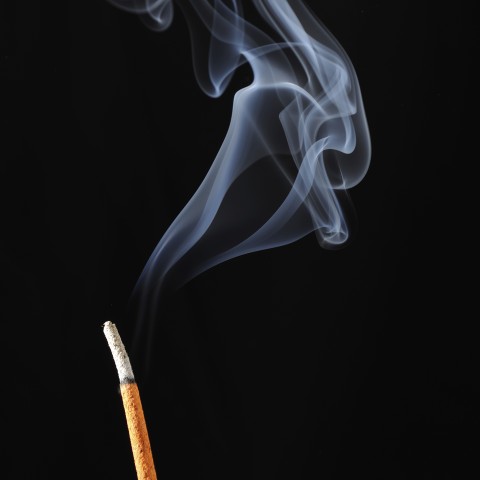
Here’s some vocabulary you should know for Vietnamese Day for Martyrs and Wounded Soldiers!
- Ngày thương binh liệt sĩ — “Day for Martyrs and Wounded Soldiers”
- cựu chiến binh — “veteran”
- lòng biết ơn — “gratitude”
- đài tưởng niệm liệt sĩ — “patriotic-war-dead memorial”
- thắp hương — “burning incense”
- cầu nguyện cho người đã mất — “pray for the dead”
- bảo vệ — “protect”
- giải thưởng — “award”
- vòng hoa — “wreath”
- huân chương — “honors”
To hear each vocabulary word pronounced, check out our relevant vocabulary list!
Conclusion
We hope you enjoyed learning about Vietnam’s Remembrance Day with us, and that you took away some valuable information from this article.
Does your country have a Remembrance or Memorial Day? Let us know in the comments, and feel free to tell us how your country celebrates it.
To continue learning Vietnamese, explore VietnamesePod101.com and take advantage of our fun and practical learning resources. Read more insightful blog posts like this one, study free Vietnamese vocabulary lists, or reach out for help on our community forums. By upgrading to Premium Plus, you can also begin using our MyTeacher program to learn Vietnamese with your own teacher and personalized plan!
Learning a new language is a noble task, and one that’s not always easy. But know that your dedication and hard work will pay off, and you’ll be speaking, writing, and reading Vietnamese like a native before you know it!

How to Celebrate President Ho Chi Minh’s Birthday
Ho Chi Minh (often called Uncle Ho or Uncle Ho Chi Minh), was a Vietnam President and one of the most influential people for the country. In honor of Uncle Ho, Vietnam celebrates his birthday each year.
In this article, we’ll be going over the Ho Chi Minh holiday, one of the most important and widely celebrated Vietnam holidays today. In learning about Ho Chi Minh (leader, President, and beloved fighter for independence), you’re also allowing yourself to gain a deeper understanding of what values Vietnam holds closest to its heart, as well as its history.
At VietnamesePod101.com, we hope to make learning about Vietnamese culture, like this Ho Chi Minh public holiday, both fun and informative!

1. What is President Ho Chi Minh’s Birthday?
One of the great heroes who played the most important role in Vietnam’s history of fights to defend the country is Ho Chi Minh. He is venerated and loved by the whole population of Vietnam; therefore, the birthday of President Ho Chi Minh on May 19 is solemnly celebrated by the State and the Vietnamese people.
2. When is Ho Chi Minh’s Birthday?
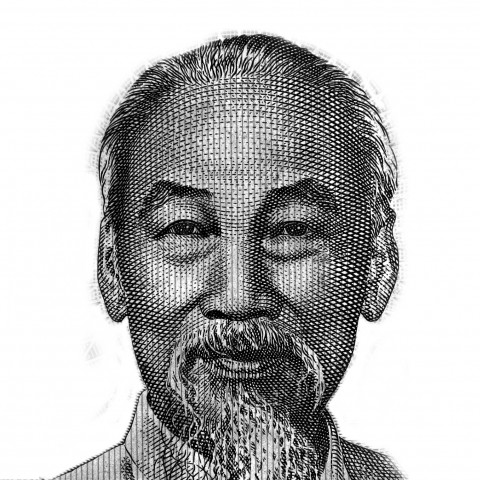
Each year, Vietnam celebrates Ho Chi Minh’s birthday on May 19.
3. Reading Practice: Celebrations of Ho Chi Minh’s Birthday
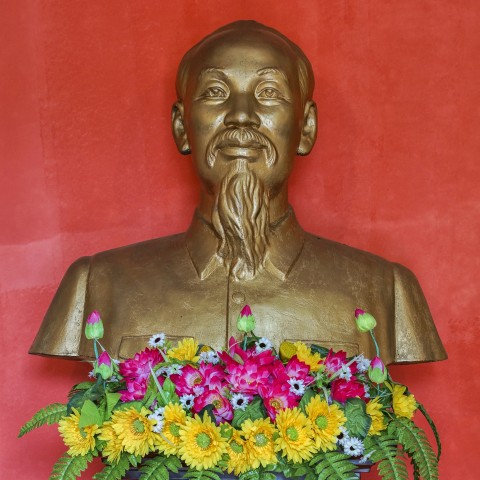
How do the Vietnamese celebrate Ho Chi Minh’s birthday each year? Read the Vietnamese text below to find out, and find the English translation directly below it.
—
Vào ngày 19 tháng 5 hàng năm, rất nhiều các hoạt động tưởng nhớ về Hồ Chủ tịch được tổ chức trên toàn quốc. Các cuộc thi ảnh, triển lãm tư liệu về ông được hưởng ứng nhiệt liệt. Đồng thời vào dịp này, rất nhiều người dân từ khắp mọi miền đất nước về thăm Nam Đàn – Nghệ An để thể hiện tấm lòng biết ơn với vị lãnh tụ vĩ đại. Ngoài ra, Lăng Chủ tịch tại thủ đô Hà Nội cũng là nơi nhiều người đến viếng thăm và tưởng niệm ông trong ngày này.
Nhân dịp kỷ niệm ngày sinh Hồ Chủ tịch, các kênh truyền hình Việt Nam như VTV1, VTV3, … cũng thường xuyên đăng tải phim tài liệu về con người – sự nghiệp và cuộc đời ông trong những năm tháng đấu tranh vì hòa bình dân tộc. Có những thước phim đã được chiếu lại nhiều lần, tuy nhiên, rất nhiều người Việt Nam vẫn luôn xúc động và cảm thấy tự hào khi xem lại những hình ảnh đó. Bạn sẽ có thể dễ dàng tìm thấy nhiều bức ảnh, biểu ngữ, câu nói nổi tiếng của Hồ Chủ tịch được treo khắp nơi trên đường phố và các quảng trường lớn.
—
On May 19 every year, many activities in memory of President Ho Chi Minh are held across the country. Photo contests and documentary exhibitions about the President receive warm responses. Also on this occasion, many people across the country visit Nam Dan in Nghe An to express their gratitude to the great leader. The Ho Chi Minh Mausoleum in Hanoi is another place where many people come and commemorate him on this day.
On the occasion of the anniversary of President Ho Chi Minh’s birthday, Vietnamese TV channels such as VTV1, VTV3, and so on also regularly broadcast documentaries on the character, career, and life of President Ho Chi Minh during his years of fighting for national peace. Some footage is replayed many times; however, many Vietnamese people are still moved and feel proud when they’re re-watching those scenes. You will no doubt see a lot of pictures, banners, and famous quotes of President Ho Chi Minh hung across the streets and in large squares.
4. Who was Ho Chi Minh?
Ho Chi Minh was born Nguyen Sinh Cung in 1890 in a Confucian family in a small village in Nghe An province, Central Vietnam. He played a decisive role in the fights of Vietnamese people against powers such as France and the United States. With his talented guidance, President Ho Chi Minh led the Vietnamese nation to winning and seizing independence, freedom, and unification.
The most famous quote of Ho Chi Minh is: “There is nothing more precious than independence and freedom!” This was extracted from his call to arms against American imperialism and for the defense of the country on July 17, 1966.
5. Useful Vocabulary for Ho Chi Minh’s Birthday
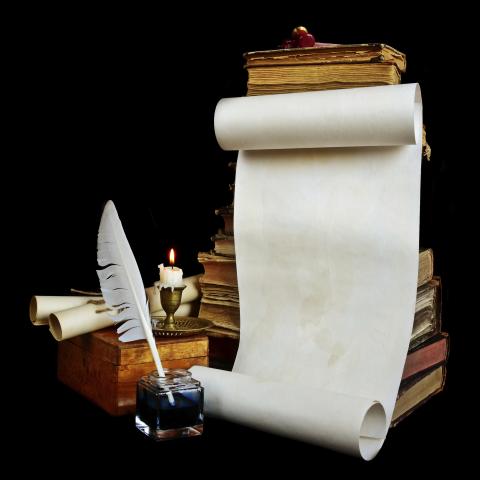
Here’s some vocabulary you should know for this holiday in Vietnam!
- Lịch sử — “History”
- Kỷ niệm — “Celebrate”
- Hoa — “Flower”
- Lãnh đạo — “Lead”
- Bác Hồ — “Uncle Ho”
- Tổ chức — “Organize”
- Tỏ lòng biết ơn — “Show gratitude”
- Kính trọng — “Respect”
- Quý giá — “Precious”
- Ngày sinh của Chủ tịch Hồ Chí Minh — “President Ho Chi Minh’s Birthday”
To hear each vocabulary word pronounced, check out our vocabulary list for Ho Chi Minh’s Birthday. Here, you’ll find each word accompanied by an audio file of its pronunciation.
Conclusion
What do you think about the Vietnamese celebration of Ho Chi Minh’s Birthday? Is there a similar holiday in your own country that celebrates a leader or important figure? Let us know in the comments!
To learn more about Vietnamese culture, history, and the language, visit us at VietnamesePod101.com! There’s something here for every learner, from free vocabulary lists to insightful blog posts to broaden your knowledge. You can also chat with fellow Vietnamese learners on our forums or upgrade to Premium Plus to take advantage of our MyTeacher program!
All of the hard work and determination you’ve put into learning Vietnamese will pay off, and soon you’ll speak like a native! And VietnamesePod101.com will be here on each step of that journey.

Vietnamese New Year: How to Celebrate Tet Holiday in Vietnam
The Vietnamese Tet Holiday is one of the country’s most important holidays and one of the most greatly celebrated. Tet Holiday is the Vietnamese celebration of the lunar new year. Even the days leading up to this holiday are full of Tet Holiday traditions, and many people use this time of Tet celebrations to relax and reflect upon the coming year.
By learning about the Asian holiday Tet, you’re allowing yourself to discover so much about the country of Vietnam which will both help you learn the language and give you a greater appreciation for it.
In this article, we’ll be going over Tet Holiday traditions, answering the question “What is Tet?” and even go over Tet Holiday vocabulary so you can learn the language in context.
Let’s get started!

1. What is Tet Holiday?
Tet Holiday, or Tết m lịch in Vietnamese, is Vietnam’s celebration of the lunar new year. It’s one of the most important holidays that the Vietnamese observe, complete with lavish festivities, fireworks, and good food.
Tet Holiday celebrations are similar to other Asian New Year celebrations, but also reflect the individual values, history, and culture of Vietnam. From eating bánh chưng or “chung cake,” to visiting the chùa or “Buddhist temple,” you’ll soon see the significance of the Tet Holiday in Vietnam to its people and what makes it distinct from similar celebrations.
2. When is Vietnamese New Year?
The Tet Holiday is the Vietnamese celebration of the New Year. On the “lunar calendar,” or m lịch, it takes place from December 28 to January 3. This usually falls somewhere around late January or early February on the solar calendar.
If it happens to fall before or after a weekend, the total number of days off for this holiday may be from seven to ten, giving a long, relaxing break to everyone in Vietnam.
For your convenience, here’s a list of this holiday’s date on the Gregorian calendar for the next ten years:
- 2019: February 5
- 2020: January 25
- 2021: February 12
- 2022: February 1
- 2023: January 22
- 2024: February 10
- 2025: January 29
- 2026: February 17
- 2027: February 6
- 2028: January 26
3. How is it Celebrated?
1- Days Leading up to Tet Holiday
On the days leading up toTet, families all over Vietnam are busy with shopping and preparing for the occasion. They often organize and remodel their houses so that they’re neat and warm. They also decorate their living rooms with flowers such as apricot, cherry, or cranberry blossoms. In Vietnamese, “apricot blossoms” are called hoa mai, and “cherry blossoms” are called hoa đào.
Lunar New Year’s Eve is also a popular time for family reunions. Families often prepare two trays of food to worship their ancestors and the Earth gods at the stroke of midnight. This kind of tradition is referred to as cúng Giao thừa.
Right at the turn of the new year, “fireworks” or pháo hoa, are set off from city centers, and people all over the city rush to the top of high buildings to watch them. Those who live far from the center often go and reserve spots to watch the event several hours before the fireworks begin, or may simply just watch fireworks live on TV.
After the fireworks end, many people pick young leaves at “temples,” or in Vietnamese chùa, as they believe these leaves bring good luck to their houses. This custom is called “picking buds for luck,” or hái lộc.
2- Tet Holiday Traditions
On day one of the Tet Holiday, Vietnamese people have a custom of wishing everyone a Happy New Year. Young people will wish happy new year to their grandparents and parents, and adults often give money to children, wrapped in red envelopes. On the envelopes, you can find text saying, Hay ăn, chóng lớn, vâng lời cha mẹ, which literally means, “Eat well, grow fast, and obey parents.”
On New Year’s day, people greet each other by saying Chúc mừng năm mới!, meaning “Happy New Year,” or Chúc vạn sự như ý!, meaning, “Wish you everything to your liking.”
Many Vietnamese people also believe that the first person to step into their house (người xông nhà) on the first day of the Lunar New Year will be the one who brings either good luck or bad luck for the year.
4. Additional Information
Among the many New Year dishes, sticky rice cakes and steamed Gac rice are two dishes specially served on Tet Holiday. Also, boiled chicken, lean pork paste, and fried rolls are presented on special trays for the occasion.
5. Tet Holiday Vocabulary
To help you fully understand the Tet Holiday and how it’s celebrated, we’ve prepared a list of the most useful words to know for this occasion with their definitions.
- kẹo — “candy”
- Tết Nguyên đán — “Lunar New Year”
- rượu nếp — “glutinous rice wine”
- hạt dưa — “watermelon seeds”
- dưa hành — “pickled onion”
- tiệc — “party”
- giao thừa — “New Year’s Eve”
- hoa đào — “peach flower”
- tiền mừng tuổi — “lucky money for happy new age”
- cây quất — “kumquat”
- lời chúc — “greeting”
- hoa quả khô — “dried candied fruit”
- câu đối — “couplet”
- bánh chưng — “chung cake”
- chùa — “Buddhist temple”
- người xông nhà — “the first person to enter the house on the first day of the year”
- mâm ngũ quả — “five fruits tray”
To hear the pronunciation of each Tet Day vocabulary word, visit our relevant vocabulary list. Here, you’ll find an audio pronunciation alongside each word.
Conclusion
As you can see, the Tet Holiday is an important holiday to the Vietnamese people and is celebrated whole-heartedly! What New Year traditions are there in your country? Let us know in the comments!
For more information on Vietnamese culture and the language, visit us at VietnamesePod101.com. We offer an array of insightful blog posts, free vocabulary lists, and an online community where you can discuss lessons with fellow Vietnamese learners. You can also download our MyTeacher app for a one-on-one learning experience with your own personal Vietnamese teacher! We’re here to make learning Vietnamese fun and efficient.
We wish you the best as you delve deeper into Vietnamese culture and continue practicing its language. Continue studying and practicing, and you’ll master the language before you know it!

How to Say Happy New Year in Vietnamese & New Year Wishes
Learn all the Vietnamese New Year wishes online, in your own time, on any device! Join VietnamesePod101 for a special Vietnamese New Year celebration!
Can you relate to the year passing something like this: “January, February, March – December!”? Many people do! Quantum physics teaches us that time is relative, and few experiences illustrate this principle as perfectly as when we reach the end of a year. To most of us, it feels like the old one has passed in the blink of an eye, while the new year lies ahead like a very long journey! However, New Year is also a time to celebrate beginnings, and to say goodbye to what has passed. This is true in every culture, no matter when New Year is celebrated.
So, how do you say Happy New Year in Vietnamese? Let a native teach you! At VietnamesePod101, you will learn how to correctly greet your friends over New Year, and wish them well with these Vietnamese New Year wishes!

Table of Contents
- How to Celebrate New Year in Vietnam
- Must-Know Vietnamese Words & Phrases for the New Year!
- Top 10 New Year’s Resolutions in Vietnamese
- Inspirational New Year Quotes
- Inspirational Language Learning Quotes
- How To Say Happy New Year in 31 Languages
- How VietnamesePod101 Can Help You Learn Vietnamese
But let’s start with some vocabulary for Vietnamese New Year celebrations, very handy for conversations.
1. How to Celebrate New Year in Vietnam
New Year’s Day, or Tết dương lịch, takes place on January 1st, and is one of the most important festivals in many nations around the world. In the past, celebrations surrounding New Year’s Day were usually adjusted to suit the Vietnamese lifestyle, but the day eventually became a standard official holiday recognized by the State of Vietnam.
Now, before we get into more detail, do you know the answer to this question?
What is the other name of New Year’s Day in Vietnamese?
If you don’t already know, you’ll find out a bit later. Keep reading.
New Year’s Day is not widely regarded as a traditional holiday in Vietnam, so there are no customary dishes associated with it. Instead, Vietnamese people often simply come together for meals at family reunions or with friends. The phrase for “Family reunion” in Vietnamese is sum họp gia đình. From the afternoon of December 31, many trade centers and streets become much more crowded than usual. Young people often gather together for meals, leisure activities, movies, and so on, and then wait for the turn of the new year.
At the moment the year turns over, Vietnamese people join the countdown from 10 to 0, shouting joyfully and greeting the New Year. In recent years, a brand of beer that is popular in Vietnam, Heineken, has regularly sponsored and organized the Countdown Party, or Lễ đếm ngược, in Hanoi and Ho Chi Minh City. Using an extravagant sound and lighting system, the party has quickly become very successful. At this event, many famous singers and DJs are invited to perform and create a lively atmosphere.
When the clock strikes midnight, fireworks are let off and people shout “Happy New Year,” or in Vietnamese Chúc mừng năm mới. However, as fireworks can cause damage if used improperly, the locations and quantity of fireworks allowed to be set off each year are decided by the government. Major cities like Hanoi, Ho Chi Minh City, and Da Nang are often popular places for fireworks, but the quantity of fireworks set off is typically less than that of the Lunar New Year’s Day, or Tết Âm lịch.
Now it’s time to answer our quiz question!
Do you know any other names for New Year’s Day in Vietnamese?
New Year’s Day is also known as Western New Year’s Day or in Vietnamese “Tết Tây” which literally means Western Tet. It’s because this holiday was rooted in the French Colonial period when the Western calendar first began to be adopted and used in Vietnam.
Happy New Year!
Chúc mừng năm mới!
2. Must-Know Vietnamese Words & Phrases for the New Year!
1- Year
năm
This is pretty self-explanatory. Most countries follow a Gregorian calendar, which has approximately 365 days in a year, while in some cultures, other year designations are also honored. Therefore, New Year’s day in Vietnam could fall on a different day than in your country. When do you celebrate New Year?
2- Midnight
nửa đêm
The point in time when a day ends and a new one starts. Many New Year celebrants prefer to stay awake till midnight, and greet the new annum as it breaks with fanfare and fireworks!
3- New Year’s Day
năm mới
In most countries, the new year is celebrated for one whole day. On the Gregorian calendar, this falls on January 1st. On this day, different cultures engage in festive activities, like parties, parades, big meals with families and many more.
4- Party
tiệc
A party is most people’s favorite way to end the old year, and charge festively into the new one! We celebrate all we accomplished in the old year, and joyfully anticipate what lies ahead.
5- Dancing
nhảy múa
Usually, when the clock strikes midnight and the New Year officially begins, people break out in dance! It is a jolly way to express a celebratory mood with good expectations for the year ahead. Also, perhaps, that the old year with its problems has finally passed! Dance parties are also a popular way to spend New Year’s Eve in many places.
6- Champagne
rượu sâm banh
Originating in France, champagne is a bubbly, alcoholic drink that is often used to toast something or someone during celebrations.
7- Fireworks
pháo hoa
These are explosives that cause spectacular effects when ignited. They are popular for announcing the start of the new year with loud noises and colorful displays! In some countries, fireworks are set off to scare away evil spirits. In others, the use of fireworks is forbidden in urban areas due to their harmful effect on pets. Most animals’ hearing is much more sensitive than humans’, so this noisy display can be very frightful and traumatising to them.
8- Countdown
đếm ngược
This countdown refers to New Year celebrants counting the seconds, usually backward, till midnight, when New Year starts – a great group activity that doesn’t scare animals, and involves a lot of joyful shouting when the clock strikes midnight!
9- New Year’s Holiday
kỳ nghỉ lễ Năm mới
In many countries, New Year’s Day is a public holiday – to recuperate from the party the previous night, perhaps! Families also like to meet on this day to enjoy a meal and spend time together.
10- Confetti
hoa giấy
In most Western countries, confetti is traditionally associated with weddings, but often it is used as a party decoration. Some prefer to throw it in the air at the strike of midnight on New Year’s Eve.
11- New Year’s Eve
đêm giao thừa
This is the evening before New Year breaks at midnight! Often, friends and family meet for a party or meal the evening before, sometimes engaging in year-end rituals. How are you planning to give your New Year greetings in 2018?
12- Toast
nâng cốc chúc mừng
A toast is a type of group-salutation that involves raising your glass to drink with others in honor of something or someone. A toast to the new year is definitely in order!
13- Resolution
quyết tâm
Those goals or intentions you hope to, but seldom keep in the new year! Many people consider the start of a new year to be the opportune time for making changes or plans. Resolutions are those intentions to change, or the plans. It’s best to keep your resolutions realistic so as not to disappoint yourself!
14- Parade
cuộc diễu hành
New Year celebrations are a huge deal in some countries! Parades are held in the streets, often to celebratory music, with colorful costumes and lots of dancing. Parades are like marches, only less formal and way more fun. At VietnamesePod101, you can engage in forums with natives who can tell you what Vietnamese New Year celebrations are like!
3. Top 10 New Year’s Resolutions
So, you learned the Vietnamese word for ‘resolution’. Fabulous! Resolutions are those goals and intentions that we hope to manifest in the year that lies ahead. The beginning of a new year serves as a good marker in time to formalise these. Some like to do it in writing, others only hold these resolutions in their hearts. Here are our Top 10 New Year’s resolutions at VietnamesePod101 – what are yours?
Learn these phrases and impress your Vietnamese friends with your vocabulary.
1- Read more
Đọc thêm.
Reading is a fantastic skill that everyone can benefit from. You’re a business person? Apparently, successful business men and women read up to 60 books a year. This probably excludes fiction, so better scan your library or Amazon for the top business reads if you plan to follow in the footsteps of the successful! Otherwise, why not make it your resolution to read more Vietnamese in the new year? You will be surprised by how much this will improve your Vietnamese language skills!
2- Spend more time with family
Dành nhiều thời gian hơn cho gia đình.
Former US President George Bush’s wife, Barbara Bush, was quoted as having said this: “At the end of your life, you will never regret not having passed one more test, not winning one more verdict, or not closing one more deal. You will regret time not spent with a husband, a friend, a child, a parent.” This is very true! Relationships are often what gives life meaning, so this is a worthy resolution for any year.
3- Lose weight
Giảm cân.
Hands up, how many of you made this new year’s resolution last year too…?! This is a notoriously difficult goal to keep, as it takes a lot of self discipline not to eat unhealthily. Good luck with this one, and avoid unhealthy fad diets!
4- Save money
Tiết kiệm tiền.
Another common and difficult resolution! However, no one has ever been sorry when they saved towards reaching a goal. Make it your resolution to save money to upgrade your subscription to VietnamesePod101’s Premium PLUS option in the new year – it will be money well spent!
5- Quit smoking
Bỏ thuốc lá.
This is a resolution that you should definitely keep, or your body could punish you severely later! Smoking is a harmful habit with many hazardous effects on your health. Do everything in your power to make this resolution come true in the new year, as your health is your most precious asset.
6- Learn something new
Học thứ gì mới.
Science has proven that learning new skills can help keep brain diseases such as dementia and Alzheimer’s at bay! It can even slow down the progression of the disease. So, keep your brain healthy by learning to speak a new language, studying towards a qualification, learning how to sew, or how to play chess – no matter how old you are, the possibilities are infinite!
7- Drink less
Uống ít hơn.
This is another health resolution that is good to heed any time of the year. Excessive drinking is associated with many diseases, and its effect can be very detrimental to good relationships too. Alcohol is a poison and harmful for the body in large quantities!
8- Exercise regularly
Tập thể dục thường xuyên.
This resolution goes hand-in-hand with ‘Lose weight’! An inactive body is an unhealthy and often overweight one, so give this resolution priority in the new year.
9- Eat healthy
Ăn uống lành mạnh.
If you stick with this resolution, you will lose weight and feel better in general. It is a very worthy goal to have!
10- Study Vietnamese with VietnamesePod101
học tiếng Việt cùng VietnamesePod101.com
Of course! You can only benefit from learning Vietnamese, especially with us! Learning how to speak Vietnamese can keep your brain healthy, it can widen your circle of friends, and improve your chances to land a dream job anywhere in the world. VietnamesePod101 makes it easy and enjoyable for you to stick to this resolution.
4. Inspirational New Year Quotes
Everyone knows that it is sometimes very hard to stick to resolutions, and not only over New Year. The reasons for this vary from person to person, but all of us need inspiration every now and then! A good way to remain motivated is to keep inspirational quotes near as reminders that it’s up to us to reach our goals.
Click here for quotes that will also work well in a card for a special Vietnamese new year greeting!
Make decorative notes of these in Vietnamese, and keep them close! Perhaps you could stick them above your bathroom mirror, or on your study’s wall. This way you not only get to read Vietnamese incidentally, but also remain inspired to reach your goals! Imagine feeling like giving up on a goal, but reading this quote when you go to the bathroom: “It does not matter how slowly you go, as long as you do not stop.” What a positive affirmation!
5. Inspirational Language Learning Quotes
Still undecided whether you should enroll with VietnamesePod101 to learn a new language? There’s no time like the present to decide! Let the following Language Learning Quotes inspire you with their wisdom.
Click here to read the most inspirational Language Learning Quotes!
As legendary President Nelson Mandela once said: “If you talk to a man in a language he understands, that goes to his head. If you talk to him in his own language, that goes to his heart.” So, learning how to say Happy New Year in Vietnamese could well be a way into someone special’s heart for you! Let this year be the one where you to learn how to say Happy New Year, and much more, in Vietnamese – it could open many and unexpected doors for you.
6. How To Say Happy New Year in 31 Languages
Here’s a lovely bonus for you! Why stop with Vietnamese – learn how to say Happy New Year in 31 other languages too! Watch this video and learn how to pronounce these New Year’s wishes like a native in under two minutes.
7. Why Enrolling with VietnamesePod101 Would Be the Perfect New Year’s Gift to Yourself!
If you are unsure how to celebrate the New Year, why not give yourself a huge gift, and enroll to learn Vietnamese! With more than 12 years of experience behind us, we know that VietnamesePod101 would be the perfect fit for you. There are so many reasons for this!
- Custom-tailored Learning Paths: Start learning Vietnamese at the level that you are. We have numerous Learning Pathways, and we tailor them just for you based on your goals and interests! What a boon!
- Marked Progress and Fresh Learning Material Every Week: We make new lessons available every week, with an option to track your progress. Topics are culturally appropriate and useful, such as “Learning how to deliver negative answers politely to a business partner.” Our aim is to equip you with Vietnamese that makes sense!
- Multiple Learning Tools: Learn in fun, easy ways with resources such 1,000+ video and audio lessons, flashcards, detailed PDF downloads, and mobile apps suitable for multiple devices!
- Fast Track Learning Option: If you’re serious about fast-tracking your learning, Premium Plus would be the perfect way to go! Enjoy perks such as personalised lessons with ongoing guidance from your own, native-speaking teacher, and one-on-one learning on your mobile app! You will not be alone in your learning. Weekly assignments with non-stop feedback, answers and corrections will ensure speedy progress.
- Fun and Easy: Keeping the lessons fun and easy-to-learn is our aim, so you will stay motivated by your progress!

There’s no reason not to go big in 2018 by learning Vietnamese with VietnamesePod101. Just imagine how the world can open up for you!











